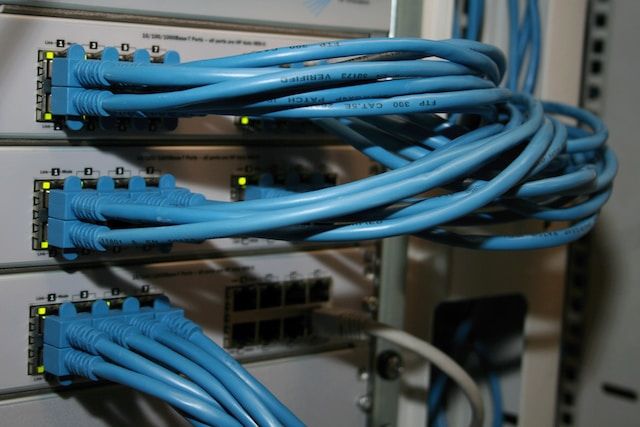Signal Encoding from SDI to IP: Overcoming Challenges for Delivery via SRT, RTMP, RIST, and UDP

With the rapid advancements in digital video broadcasting, the transition from traditional SDI (Serial Digital Interface) to IP-based delivery has become increasingly prevalent. This shift offers numerous advantages, including improved scalability, flexibility, and cost-effectiveness. However, it also brings along its fair share of challenges. In this article, we will explore the process of signal encoding from SDI to IP and delve into the difficulties that arise during delivery over protocols such as SRT, RTMP, RIST, and UDP, along with potential solutions.
Signal Encoding: Converting SDI to IP
SDI has long been the industry-standard method for transmitting high-quality uncompressed video and audio signals. However, as IP-based infrastructures gain momentum, it becomes necessary to convert SDI signals into IP packets for delivery over networks. Signal encoding bridges the gap between these two formats, enabling seamless transmission and distribution.
The encoding process involves capturing the SDI signal using a capture card or video interface device, converting it into a digital format, and encapsulating it within IP packets for delivery over IP-based networks. This transformation introduces several complexities that need to be addressed for successful delivery.
Delivery over SRT (Secure Reliable Transport)
SRT has emerged as a popular protocol for secure and reliable video streaming over unpredictable networks. It combines the advantages of UDP (User Datagram Protocol) and TCP (Transmission Control Protocol), offering error recovery, congestion control, and encryption. However, when encoding SDI signals for delivery over SRT, several challenges may arise:
- Bandwidth Limitations: SDI signals typically have high bandwidth requirements. To overcome this challenge, efficient encoding techniques like compression and bitrate optimization can be employed. By reducing the bitrate without compromising quality, the encoded stream becomes more network-friendly.
- Latency Management: While SRT is known for its low-latency characteristics, the encoding process may introduce additional latency. To mitigate this, hardware encoders with low-latency capabilities can be utilized, or software encoding algorithms can be fine-tuned to minimize processing delays.
- Stream Protection: SRT already provides built-in encryption for secure transmission. However, additional security measures, such as AES encryption, can be implemented at the encoding stage to further safeguard the content from unauthorized access.
Delivery over RTMP (Real-Time Messaging Protocol)
RTMP has been widely used for streaming audio, video, and data over the internet. It offers low-latency communication and supports interactive features. However, as SDI signals are encoded and delivered over RTMP, certain obstacles must be addressed:
- Protocol Compatibility: RTMP is primarily designed for web-based streaming applications and may require additional adaptations to support SDI signals. Transcoding or encapsulating the SDI-encoded stream into a format compatible with RTMP is necessary.
- Bandwidth and Quality: Similar to SRT, SDI signals can strain available network bandwidth. Employing efficient compression techniques, adaptive bitrate streaming, and QoS (Quality of Service) mechanisms can help ensure smooth delivery without compromising on video quality.
- Firewall and NAT Traversal: RTMP may face challenges in traversing firewalls and network address translation (NAT) configurations. Employing techniques like STUN (Session Traversal Utilities for NAT) and TURN (Traversal Using Relays around NAT) can help overcome these hurdles by establishing direct connections between endpoints.
Delivery over RIST (Reliable Internet Stream Transport)
RIST is an emerging protocol specifically designed for reliable contribution and distribution of video content over the internet. It offers features such as packet retransmission, encryption, and error recovery. While encoding SDI signals for RIST delivery, the following difficulties may arise:
- Buffer Management: Packet retransmission in RIST introduces additional buffer requirements, increasing latency. Optimizing buffer size and implementing dynamic buffer management techniques can help strike a balance between reliability and latency.
- Network Congestion: In case of network congestion, RIST's congestion control mechanisms may slow down the delivery process. Implementing congestion control algorithms at the encoding stage, such as those based on the Transmission Control Protocol (TCP), can alleviate congestion-related issues.
- Error Recovery: RIST's error recovery capabilities provide robustness against packet loss and transmission errors. However, the encoding process must account for possible errors and implement error correction techniques, such as forward error correction (FEC), to ensure reliable delivery.
Delivery over UDP (User Datagram Protocol)
UDP is a connectionless transport protocol known for its simplicity and low overhead, making it suitable for real-time applications. However, encoding SDI signals for UDP delivery introduces specific challenges:
- Packet Loss: UDP does not provide built-in mechanisms for error recovery, making it susceptible to packet loss. Implementing error correction techniques like FEC or using forward error correction protocols such as RaptorQ can help mitigate the impact of packet loss.
- Synchronization: In SDI signals, video and audio streams are tightly synchronized. However, UDP may introduce slight variations in packet arrival times, potentially leading to desynchronization. Employing synchronization techniques at the encoding stage, such as timestamping and prioritizing critical packets, can help maintain proper synchronization.
- Network Congestion: UDP lacks congestion control mechanisms, making it vulnerable to network congestion. Implementing congestion control algorithms, such as rate control and adaptive streaming, can help ensure smooth delivery and mitigate the impact of congestion.
The transition from SDI to IP-based delivery offers numerous benefits but also presents various challenges. Encoding SDI signals for delivery over protocols like SRT, RTMP, RIST, and UDP requires careful consideration of bandwidth, latency, quality, security, and error recovery. Implementing solutions such as efficient encoding techniques, adaptive streaming, encryption, error correction, congestion control, and synchronization can help overcome these difficulties and ensure successful delivery of SDI content over IP networks. By addressing these challenges, broadcasters and content providers can embrace the advantages of IP-based delivery and enhance their streaming capabilities.
